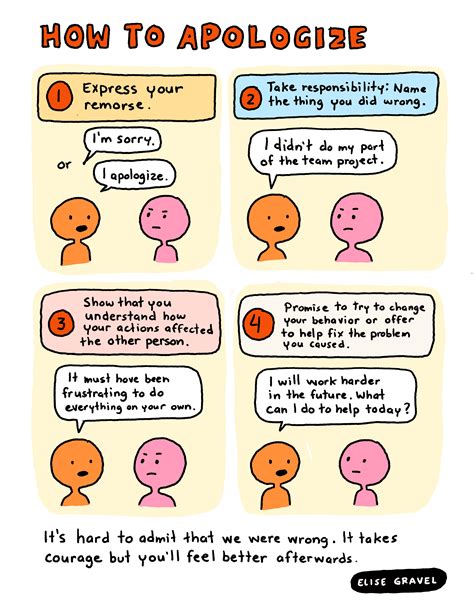How To Apologize: A Guide to Saying Sorry Effectively
Saying sorry might seem simple, but a truly effective apology goes beyond just uttering the words "I'm sorry." A heartfelt and sincere apology can mend broken relationships, diffuse tense situations, and foster stronger connections. This guide will walk you through the essential steps to crafting an apology that truly works.
Understanding the Importance of a Sincere Apology
Before diving into the how, let's understand the why. A sincere apology isn't just about avoiding conflict; it's about taking responsibility for your actions and showing genuine remorse. It demonstrates empathy, respect, and a willingness to repair the damage caused. A poorly delivered apology can actually worsen the situation, so mastering this skill is crucial for personal and professional success.
Steps to Crafting a Powerful Apology
Here's a step-by-step guide to help you deliver an impactful apology:
1. Acknowledge Your Wrongdoing: Own Your Mistakes
Don't make excuses, minimize your actions, or blame others. Take full responsibility for your part in the situation. For example, instead of saying "I'm sorry if I offended you," try "I'm sorry I offended you. My comment about [specific action] was insensitive and inappropriate." Specificity is key.
2. Express Genuine Remorse: Show You Care
Convey your sincere regret for the hurt or damage you caused. Use language that demonstrates empathy and understanding of the other person's feelings. Words like "I deeply regret," "I'm truly sorry," or "I feel terrible about" can effectively communicate your remorse. Avoid generic apologies that lack emotional depth.
3. Empathize with the Other Person: See Things From Their Perspective
Try to understand the other person's feelings and perspective. Acknowledge their hurt and pain. Saying something like "I understand that my actions caused you [specific feeling/consequence]," shows you're not just focused on yourself. This validates their experience and demonstrates empathy.
4. Take Responsibility: Avoid Shifting Blame
Again, avoid making excuses or blaming external factors. Focus on your role in the situation and your willingness to learn from your mistake. This shows maturity and accountability. Avoid phrases like "It wasn't my intention" or "Things got out of hand."
5. Offer a Solution or Make Amends: Show Commitment to Change
If possible, offer a concrete solution to repair the damage. This could involve making amends, offering help, or promising to change your behavior. For instance, "I'll make sure to [specific action] to prevent this from happening again." This demonstrates a commitment to positive change.
6. Listen Actively and Accept the Consequences: Hear Their Response
Give the other person the space to express their feelings and listen attentively without interrupting. Accept their response, even if it's not what you hoped for. Their feelings are valid, and respecting their reaction shows maturity and respect.
Different Scenarios and Apology Adjustments
The specific wording and approach of your apology will depend on the context. A casual apology to a friend will differ significantly from a formal apology to a superior at work or a public apology for a major mistake.
When an Apology Might Not Be Enough
Sometimes, even a sincere apology may not be enough to repair the damage. This is especially true if the offense was severe or there is a history of similar behaviors. In these cases, it’s essential to be patient and understand that healing takes time.
Mastering the Art of Apology: Key Takeaways
The art of apologizing effectively involves more than just saying "sorry." It requires self-reflection, empathy, and a genuine commitment to making amends. By following these steps, you can deliver apologies that are truly meaningful and contribute to healthier relationships. Practice makes perfect, so don't be afraid to refine your approach over time.
